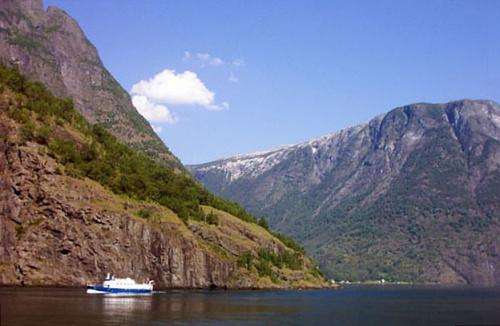The science behind the ice in Disney's Frozen

How much power does Elsa really have? According to Aaron Goldberg, quite a lot.
The Integrated Science Student analyzed the 2013 Disney musical Frozen, in which Snow Queen Elsa accidentally freezes the Kingdom of Arendelle.
Goldberg wanted to find out just how much power it would take to pull off such a feat.
The story is based on a Hans Christian Andersen fairy tale and Arendelle was inspired by the Norwegian fjord known as Nærøyfjord.
In a paper published earlier this year in the Journal of Interdisciplinary Science Topics, Goldberg worked out Nærøyfjord's total surface area and estimated the density of the ice covering it. That allowed him to determine the mass of ice that covered Arendelle, which he pegged at 99,043,217,000,000 grams.
He then suggests the use of a Carnot refrigerator—which harnesses work to drive a temperature difference between to reservoirs—to unleash the theoretical powers.
Goldberg estimates the work required by a Carnot refrigerator to freeze the entirety of the fjord to be 5,800,000,000,000,000 Joules.
To put things in perspective, that's the same amount of energy released by the atomic bomb dropped on Hiroshima during the Second World War—115 times over.
"This immense number puts Elsa's power into perspective," writes Goldberg. "implying either that the Snow Queen has enormous strength, or that Disney underestimated the ramifications of their animated fantasy."
Goldberg will enter his third year at McMaster in September.
More information: The complete paper is available online: www.physics.le.ac.uk/jist/inde … T/article/view/46/32
Provided by McMaster University

















